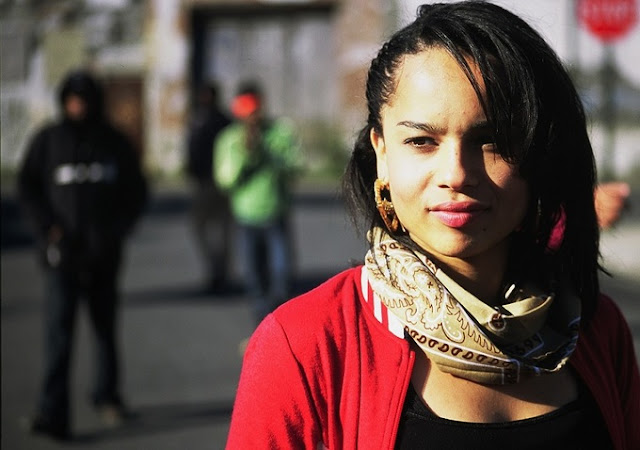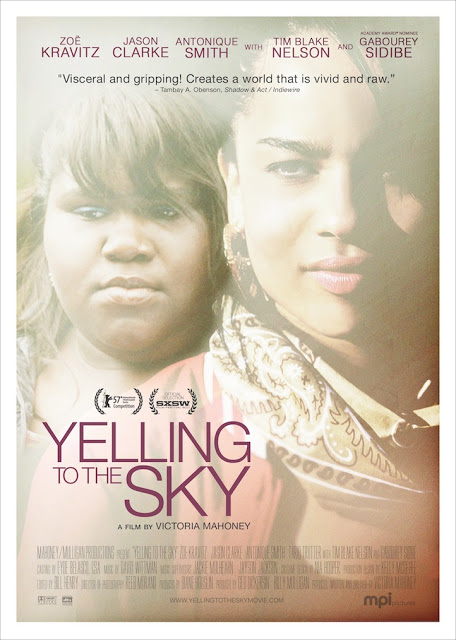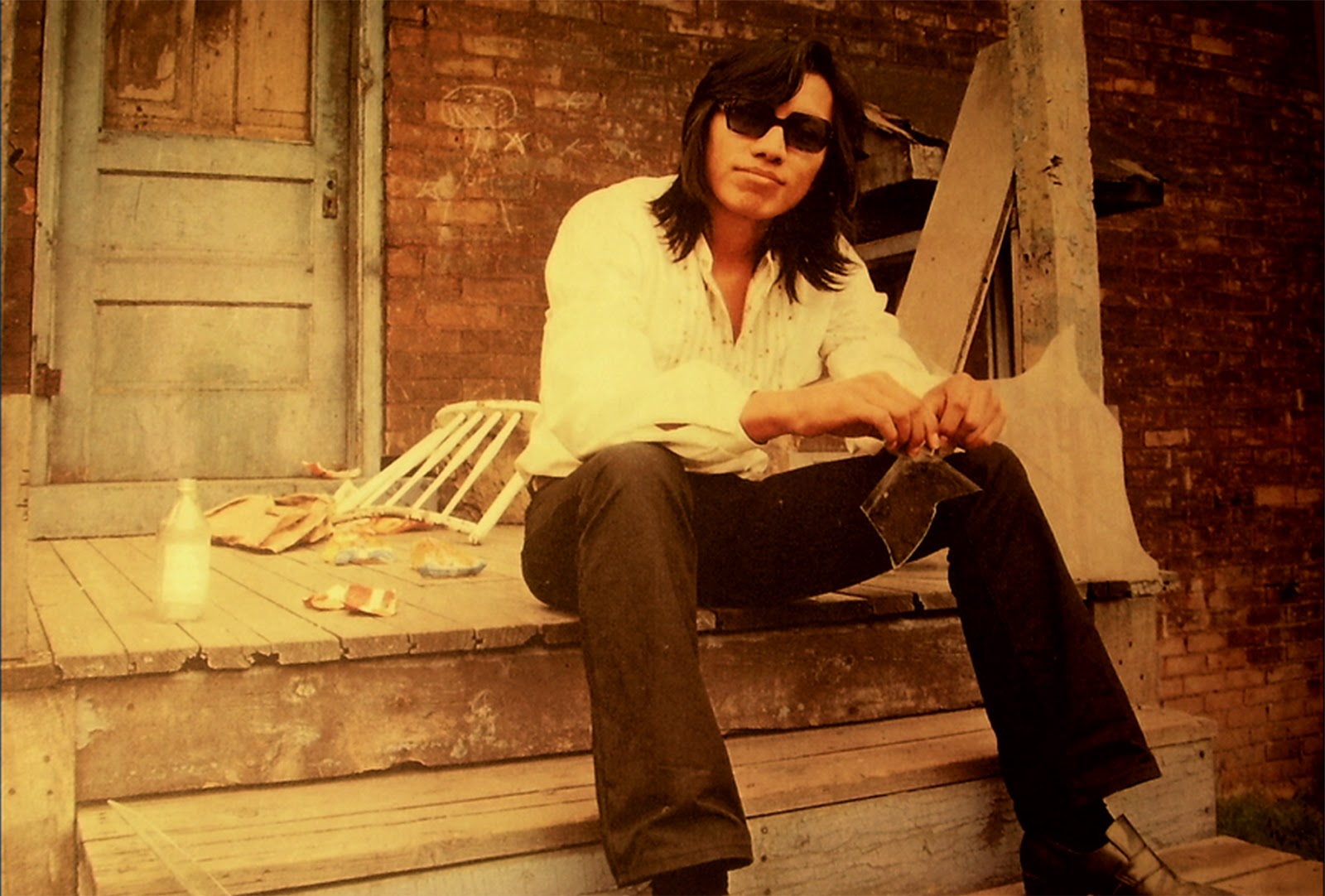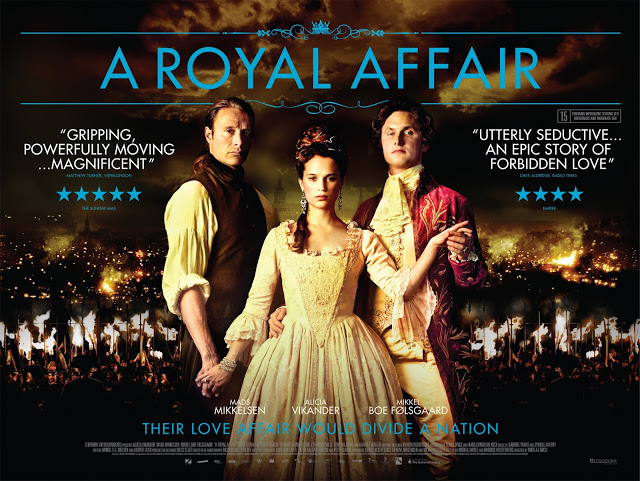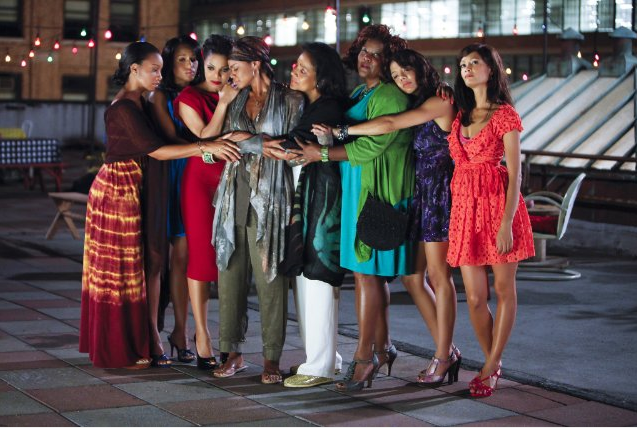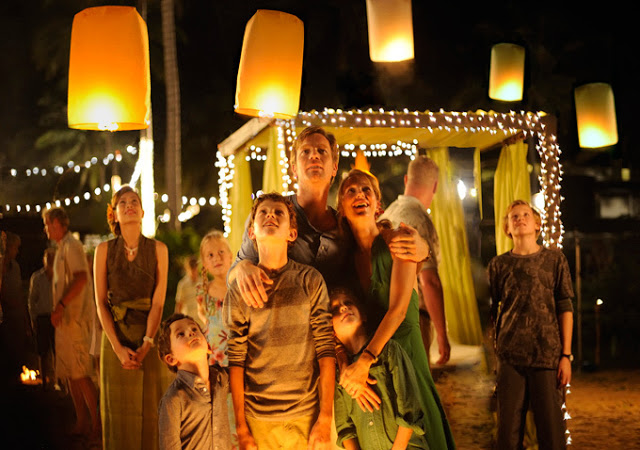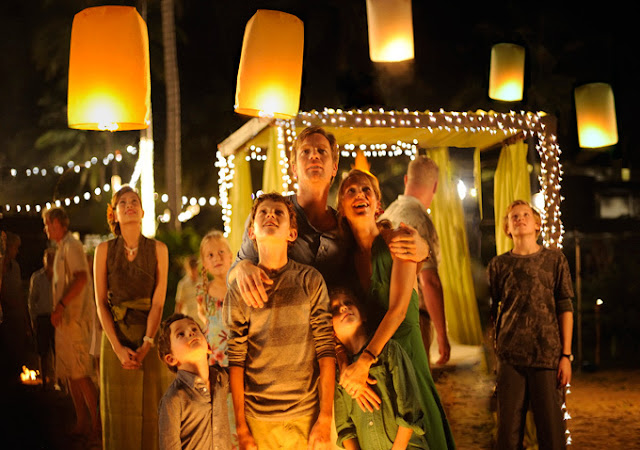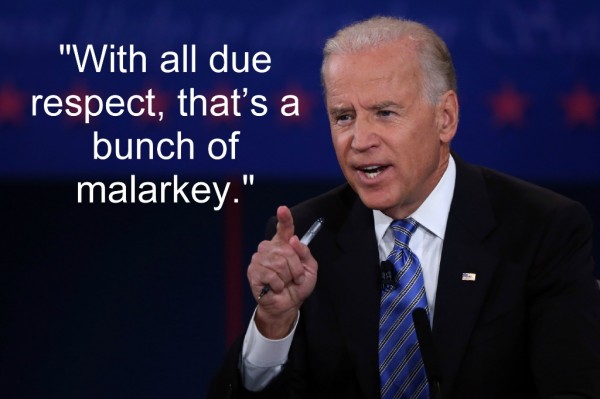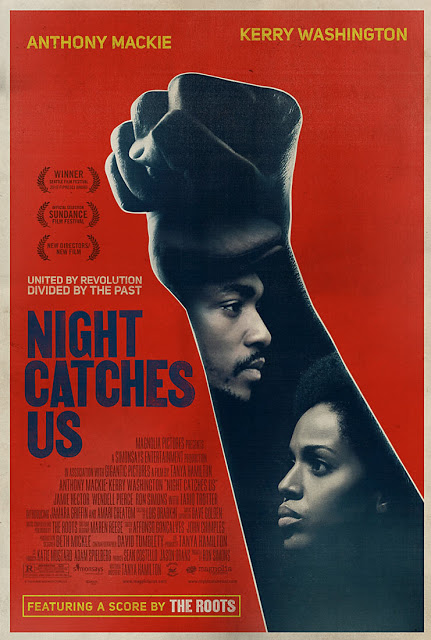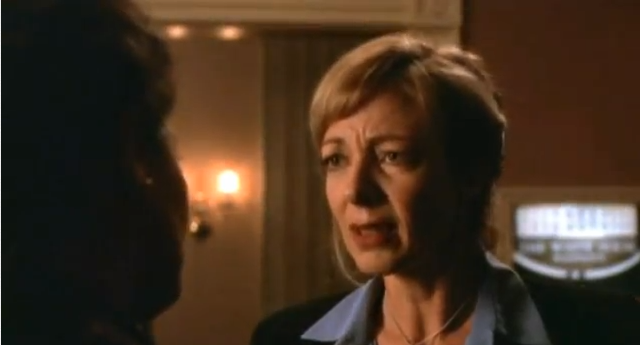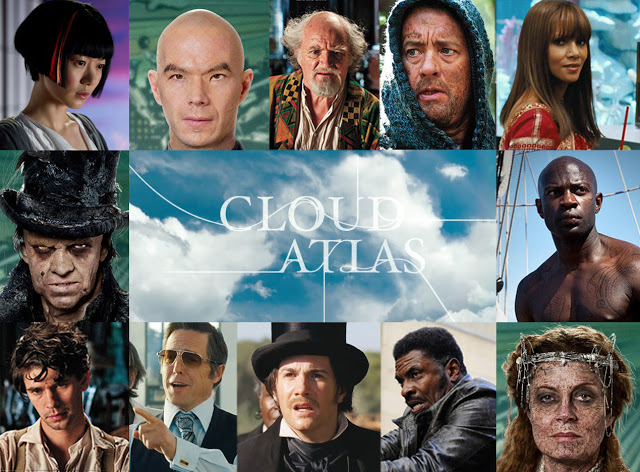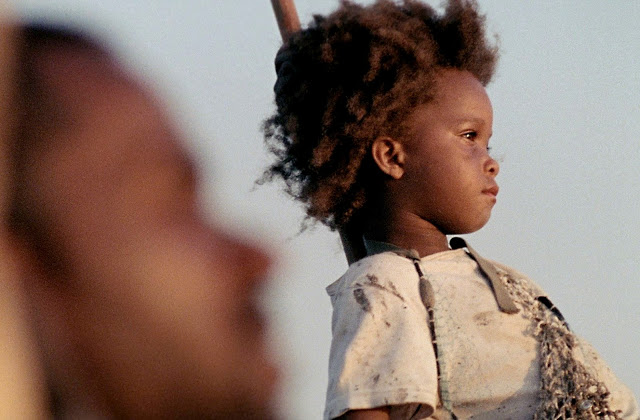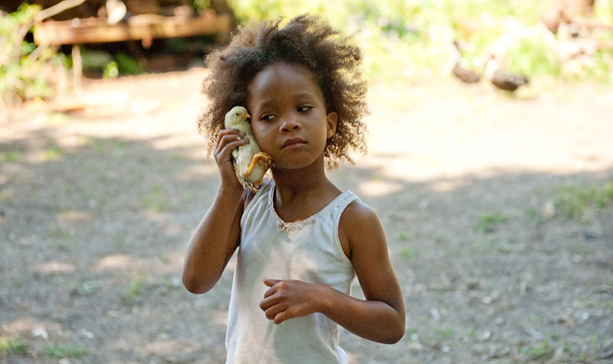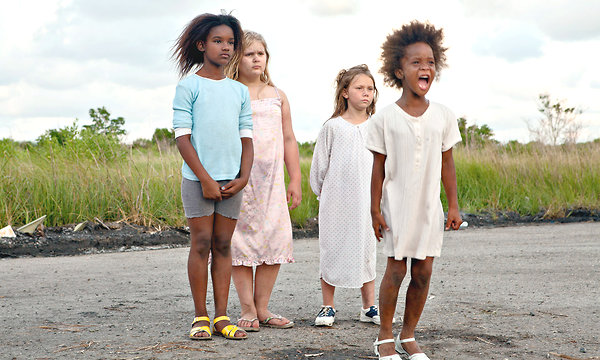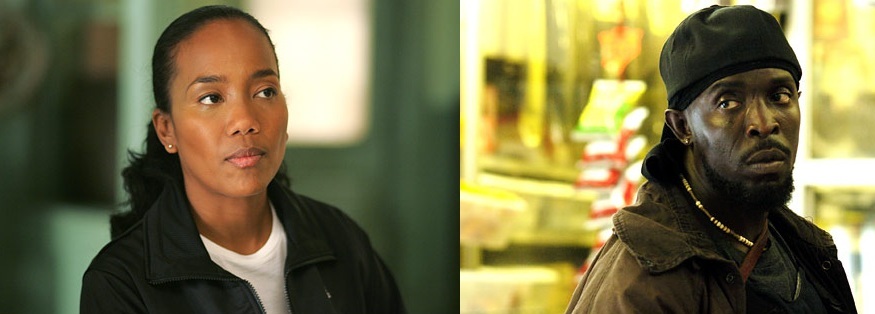I was excited to see For Colored Girls. A film about 9 women, as a feminist, how could I not be? But I have to admit, I questioned whether or not I should even be writing this review. Writing about a film revolving around African-American women, based on a seminal play on race, and I’m not a woman of color…would it be inappropriate? Would I be breaking some kind of taboo? But then I realized after reading the play and watching the film, while it speaks to women of color and the experiences they endure, it portrays myriad experiences women face.
I don’t want to diminish the unique racial struggles that women of color encounter in this film and in life for that matter. I will never know what it’s like to be followed in a store because of the color of my skin. I will never be told that I should have babies with a white man so my children will have lighter skin and be prettier. But I think this is an important film for women and men to see for the commentary it makes on gender and race and the struggles women of color endure.
For Colored Girls follows 9 African-American women whose lives intersect in a New York City brownstone. A mosaic of stories as their lives weave together. Janet Jackson is an unyielding corporate magazine mogul with intimacy issues; Loretta Devine, a nurse opening a non-profit clinic dating an unreliable boyfriend; Anika Noni Rose, an effervescent and optimistic dance instructor; Kerry Washington, a happily married social worker who can’t have the one thing she so desperately wants; Kimberly Elise, Jackson’s personal assistant and a mother of two living in an abusive relationship; Phylicia Rashad, the all-knowing wise neighbor; Whoopi Goldberg a devoutly religious woman and mother of Thandie Newton, a promiscuous woman with a thirst for life and a painful past, and Tessa Thompson, a teen who aspires to be a dancer. Almost every aspect of a woman’s life is shown: sex, losing virginity, abortion, rape, falling in love, jealousy, domestic violence, murder, sisterhood, motherhood, infidelity, infertility, break-ups and friendship.

The film
For Colored Girls is Tyler Perry’s adaptation of the critically acclaimed Obie award-winning 1974 play and choreopoem
For Colored Girls Who Have Considered Suicide When the Rainbow is Enuf written by
Ntozake Shange. I had never even heard of the play until a couple of years ago when my co-worker Nai adamantly insisted that I must read it. I was so glad she did as I was blown away by Shange’s brutally honest yet devastatingly beautiful prose. It’s raw and rhythmic, moving with a fierce visceral cadence. In the play, each woman is represented by a color: red, blue, yellow and so on. With striking visuals, the film incorporates this theme by having each of the women who signify wear outfits and garments that symbolize that color. When one of the women is raped, she stops wearing her bright color, donning black clothing instead, as if the trauma had drained her color, her vibrancy. Each woman was so unique: different classes, ages, shades of black (as my co-worker pointed out). It’s rare to find a powerful woman lead a film; it’s almost unheard of for a film to tell nine women’s distinctive tales. The movie and the play both open with these pleading words:
“somebody / anybody sing a black girl’s song bring her out to know herself to know you but sing her rhythms carin / struggle / hard times sing her song of life she’s been dead so long closed in silence so long she doesn’t know the sound of her own voice her infinite beauty she’s half-notes scattered without rhythm / no tune sing her sighs sing the song of her possibilities sing a righteous gospel…”
Perry incorporated most of the play’s language into the dialogue of the film. The powerful poetry is so strikingly beautiful and haunting, so lyrical, that at times it can yank you out of the film, reminding you that it’s not real.All of the women gave fantastic performances, particularly Thandie Newton, whose portrayal could have meandered into a caricature yet never did, Anika Noni Rose, yielding a heartbreaking depiction, and Kimberly Elise, whose restrained and poignant performance made it feel all the more authentic. I noticed that the dialogue separated the decent actors from the outstanding ones. The phenomenal actors (Rashad, Newton, Jackson, Divine, Rose, Elise), inhaled Shange’s words, tasted them and exhaled seamless monologues, making them truly their own.
Women knowing their own worth and finding their voice are messages continually conveyed. Thandie Newton utters one of my fave lines (which differs slightly from the play’s text),
“Being alive and being a woman is all I got, but being colored is a metaphysical dilemma I haven’t conquered yet.”
While it speaks to the unique intersectional experiences of race, gender and identity black women confront, I found I could still relate. I’m proud to be a woman; my gender shapes my identity yet I don’t want it defining who I am. Shange wrote the play in 1974, just after Roe v. Wade had been passed. Yet the material still rings true today. It was surprising to see one of the characters not only seeking an abortion but actually obtaining one. As I’ve written before, it’s still rare for a film or TV show to portray women getting abortions. When describing a back-alley abortion, one of the women cries:
“…metal horses gnawin my womb / dead mice fall from my mouth…”
Some of the characters contend with unspeakable hardships. When one of the characters is raped, she has to defend her actions to a police officer, how she didn’t ask for it. She whispers:
“the stranger we always thought it would be, who never showed up, cuz it turns out the nature of rape has changed…”
But watching the scenes with Kimberly Elise, in which she tiptoes, avoiding upsetting her abusive boyfriend, were some of the hardest for me to sit through, especially as a domestic violence survivor. Elise’s subtle performance makes the pain that much more palpable.
The film shows how far many women will go to please men. For Colored Girls doesn’t blame women. Rather, it shows the responsibility women bear in navigating their lives through the choices, good and bad, they make. When the hilarious Loretta Devine finally has had enough with her cheating boyfriend letting her down, she yells:
“I got a real dead loving here for you now, because I don’t know anymore how to avoid my own face wet with my tears! Because I had convinced myself that colored girls have no right to sorrow!”
She goes on to tell the women at her clinic:
“somebody almost walked off wid alla my stuff…like a kleptomaniac workin hard & forgettin while stealin this is mine / this ain’t your stuff…did you know somebody almost got away with me / me in a plastic bag under their arm…”
Many women often do too much for men, putting up with too much mediocrity. Janet Jackson experiences a similar epiphany when she tells her husband that she’s tired of hearing his apologies. She says,
“…I got sorry greeting me at my front door you can keep yours …I’m gonna haveta throw some away I can’t even get to the clothes in my closet for all the sorries… …well I will not call I’m not goin to be nice I will raise my voice & scream & holler… …& I wont be sorry for none of it”
Perry’s film has been simultaneously criticized and lauded with reviewers at both ends of the spectrum. Some have called it a “
choppy mess”, claimed
he “butchers” Shange’s play while others have
criticized it for its men bashing. While the overly negative depictions of men may be valid, the point of the play was that men can and do inflict pain and suffering on women. Women need to look for happiness and fulfillment not with men but in themselves. But maybe some people have a problem with a film in which the men are superfluous.
Manohla Dargis of the NY Times gave a favorable review discussing the tragic storylines:
“That might sound unbearable, but done right it’s thrilling — specific in its pain, universal in its reach — and Mr. Perry works very hard and gets it mostly right.”
“[Perry] gathers together some of the greatest African-American actresses in America — actresses who are lucky to get one or two scenes in a film with a predominantly white cast — in leading roles that let them chase dreams, make mistakes, fall in love, have their hearts broken, flirt, seduce, manipulate, preen, pout, rail against injustice, and endure and transcend Old Testament-level suffering. And they reward Perry with performances so heartfelt, and often so accomplished, that they make all of his films worth seeing no matter what you think of him as a director.”
For those who hated it, I can’t help but wonder that if the tribulations these women confronted were faced by men, people would have enjoyed the film more. Perhaps people are uncomfortable seeing this much pain, this much torment. But women do experience these painful situations, even the shockingly horrific domestic violence scene near the end of the film. I think people miss the movie’s point by scoffing at it for being too depressing. I’m not going to sugarcoat it and claim it’s not gut-wrenching and horrific. Oh it is, at times dipping into the melodramatic. And yes, I felt like a mack truck had run me over halfway through the film. Yet the ending was ultimately hopeful, a testament to sisterly solidarity amongst women.

In the beginning of the film, the women fight with one another and can’t get along. I was worried saying to myself, “What the hell has Tyler Perry done to Ntozake Shange’s beautifully feminist play?!” But my fears were unfounded. Women in the film face a crossroads in their lives. They suffer unspeakable tragedy and then must find a way to move forward. After the women brave wave upon wave of heartbreak and terror, the film ends, as the play does, with the women coming together; a united front, knowing their self-worth. Kimberly Elise declares,
“…I wanted to jump up outta my bones & be done wit myself leave me alone & go on in the wind it waz too much I fell into a numbness till the only tree I cd see took me up in her branches held me in the breeze made me dawn dew that chill at daybreak the sun wrapped me up swingin rose light everywhere the sky laid over me like a million men I waz cold / I was burnin up / a child & endlessly weavin garments for the moon wit my tears I found god in myself & I loved her / I loved her fiercely”
I was initially apprehensive about Tyler Perry directing and writing this adaptation, as was Shange who said in an interview that she was “
worried about his characterizations of women as plastic.” While a more adept filmmaker might have done something different or even better, I don’t think people are giving Perry due credit. He portrayed fully dimensional characters, showing the respect for women I’ve always assumed he feels despite his previous lackluster films. Perry added some important pieces to the film, like Whoopi Goldberg, as my co-worker Nai pointed out, divulging how her father gave her to a white man as he didn’t want ugly grandbabies. He also added Janet Jackson’s line where she says, “Women give up too much of their power.” I think Perry did a fantastic job of knowing what to keep and what to leave out. He remained faithful to the play, capturing its breathtaking essence.
“the best way to reframe perceptions is not through information or knowledge or education…but through the arts, through literature, through film. These are the things that really break down the boundaries and borders between us…”
Making this argument tangible, in Elle Magazine’s
Women and Hollywood November 2010 issue, director/actor
Victoria Mahoney (
Yelling at the Sky) said that if we want to see more women’s films, we must go and see them; we need to vote with our dollars, a sentiment uttered by Melissa Silverstein at
Women and Hollywood. If we want to see women on-screen, if we want to open the dialogue on racism and sexism, if we ever hope to open our minds to experiences that both differ from and echo our own, then we need to support films with women and women of color as protagonists.
The theme of a woman’s voice echoes throughout the film. Women being silenced…by shame, fear, abuse, their mothers, the men in their lives, society…is threaded throughout. Shange’s play and Perry’s film testify the power of women finding solace, self-acceptance and strength in themselves and reclaiming their voice. It’s time we listened to women’s voices and hear what they have to say.
